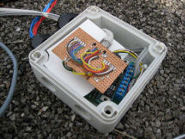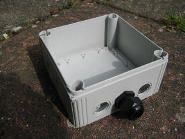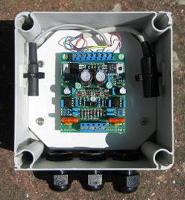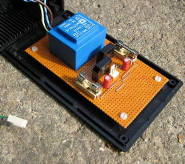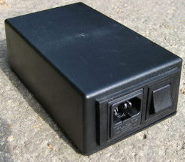Here are details on one of my latest projects. A Lightning Radar, this was designed by Frank Koofman. After reading his articles on the subject I thought I would give it a try. So far it's taken me a year, and I have only just got it up and running! But it's not finished, The first antenna frame I built is made from wood, and although it will suffice as a test bed, I doubt it will last more than a couple of years, so I have started work on the final one. The design for this comes from a chap called Daniel.... He has just come up with a much better design which is very easy to build. There is a version of the antenna he designed that requires access to a lathe and pipe bending tools, however the new design only requires basic skills, like being able to cut plastic pipe and thread around 400m of cable through the pipes!! so patients is needed. The other big advantage of this antenna design is higher gain and higher Q than both the original designs. One disadvantage is it will be heavy, as there will be around 400m of 1.5mm2 of wire in it... well at least it will not blow away.
So onto my build so far. I started with building the basic antenna. It uses a few bits of wood, some wire, a Christmas tree pot, tool steel, lead and plaster. The antenna should work fine in a loft/attic, however my loft is only just offer a 1m at it's highest, so there is no way the antenna would fit. The only other place for it is on my flat roof. Problem being, I could not screw it down, nor attach it to a soffit. So that is where the Christmas tree pot comes in. Once the antenna was placed in the pot I had to fill it with all the scraps of metal I had. However the antenna still wobbled about. The only solution I could come up with was to fill it with plaster, a hour or so later, one solid antenna :-) I'm not sure how this will fair in the winter, but it will have to do until the next antenna is ready.
The amplifier was brought as a kit from Daniel, I believe he is supplying kits as well as fully built versions.
Here are some pictures of the construction so far, click on the pictures for a larger version...
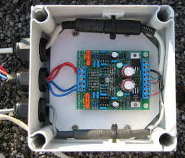 |
Here is the amplifier attached to all its cables! You might notice that the power and audio sockets have moved, It made more sense to have them on these sides once I got it installed. |
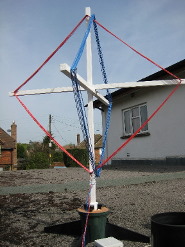 |
My test antenna, in all it's glory, (well, Christmas Tree Pot!) Antenna version 2.0 is on the way.. a much better design.. information to follow.... |
| A back view of the Amplifier PSU, again as the low voltage, so is the mains fused. |




